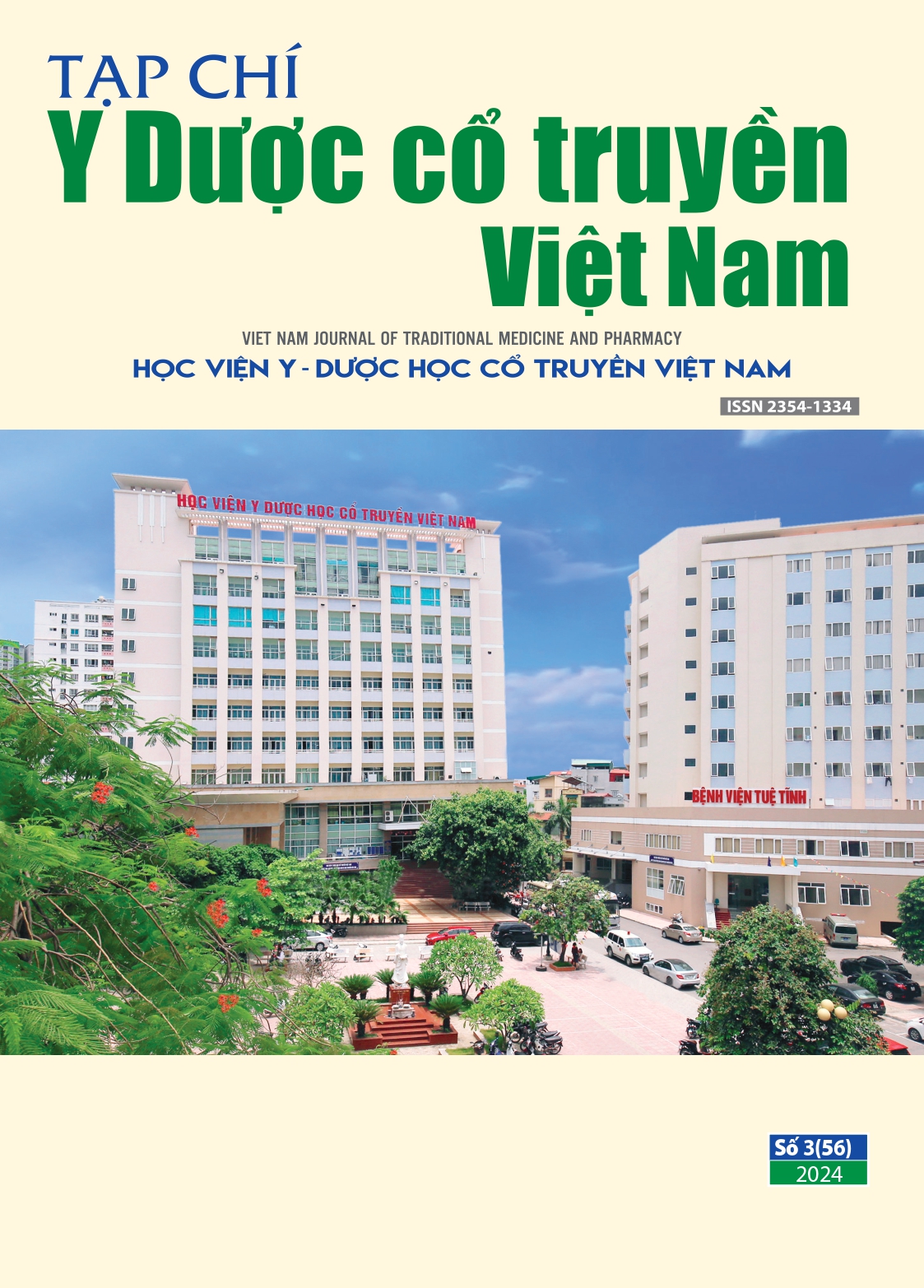Research on the anti-duodenal ulcer effect of Vien Khoi Tim capsules on cysteamine wistar rats
Main Article Content
Abstract
Objective: To evaluate the anti-duodenal ulcer effect of Vien Khoi Tim capsules on Wistar rats.
Subjects and methods: The duodenal ulcer model in rats receiving cysteamine (CYS) orally at a dose regimen of 400 mg/kg/time × 2 times were applied. Rats were divided into 5 groups comprising 12 rats each. In which, the biological proof group only received distilled water while the others were given distilled water, test samples (237.6 or 712.8 mg/kg/day) or famotidine continuously for 10 days before being taken CYS. After 24 hours of treatments, all rats were anesthetized with chloral hydrate before being dissected and observing their duodenums to evaluate the results.
Results: Vien Khoi Tim remarkably reduced rats’ ulcer indices compared to those of the model group (p < 0.05) with ulcer inhibition rates of 58.5% and 53.7%, respectively. No ulcer lesions or apoptosis were detected in the duodenal microscopic samples of both groups being taken Vien Khoi Tim, while the model group had both ulcer lesions and apoptosis at the rate of 33.33%.
Conclusion: Vien Khoi Tim hard capsules were highly effective against duodenal ulcers in rats at oral dose regimens of 237.6 and 712.8 mg/kg/day × 10 consecutive days.
Article Details
Keywords
Vien Khoi Tim, capsule, anti-duodenal ulcer effect, rat, cysteamine.
References
2. A. Orona- Ortiz et al.Effect of proportion of curcuminoids on the gastroprotective action of Curcuma longa L. in rats. Natural product research, 2021, vol.35 (11), pp.1-6.
3. Quynh Nguyen Thi. The effects of plant growth regulators on phenolic and flavonoid content in callus cultures of Ardisia silvestris Pitard. Plant cell Biotechnology and molecular biology, 2022, vol. 23 (23 – 24), pp.1-5.
4. Selye H, Szabo S. Experimental model for production of perforating duodenal ulcers by cysteamine in the rat. Nature, 1973, 244 (5416), pp.458-459.
5. Singh R., Gupta A.,Patel S. Pharmacological Screening Model and Its Treatment of Peptic Ulcer Disease. Journal for Research in Applied Sciences and Biotechnology, 2022, 21(5), pp.36-47.
6. Debiprasad Ghosh, Prasenjit Mitra, Tanaya Ghosh, Prasanta Kumar Mitra. Anti-peptic Ulcer Activity of The Leaves of Amaranthus Spinosus L. in Rats. Mintage Journal of Pharmaceutical & Medical Sciences, 2013, Vol 2, Issue 3, pp.52-53
7. Szelenyi I, Thiemer K. Distention ulcer as a model for testing of drugs for ulcerogenic side effects. Arch Toxicol, 1978, 41(1), pp.99-105
8. Simões S, Lopes R, Campos MCD, Marruz MJ, da Cruz MEM, Corvo L. Animal models of acute gastric mucosal injury: Macroscopic and microscopic evaluation. Animal Model and Experimental Medicine, 2019, 2(2), pp.121-126.
9. Pham Ba Tuyen. Research on the effects of Hpmax product in treating Helicobacter Pylori (+) duodenal ulcer, Doctoral thesis in Medicine, Hanoi Medical University, 2014.

